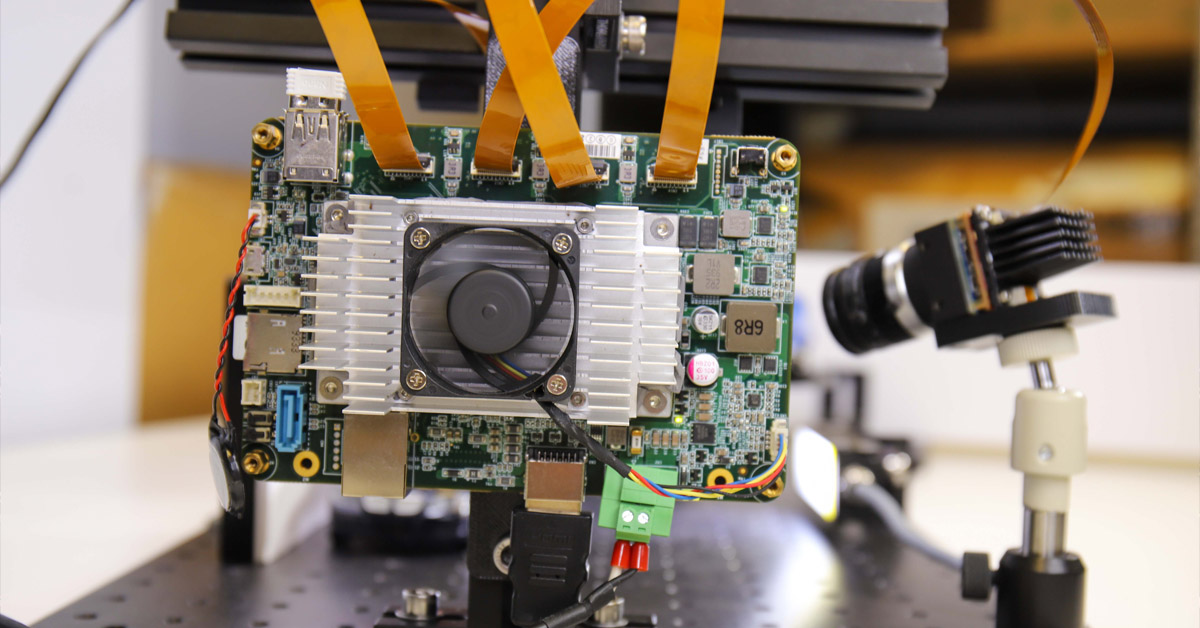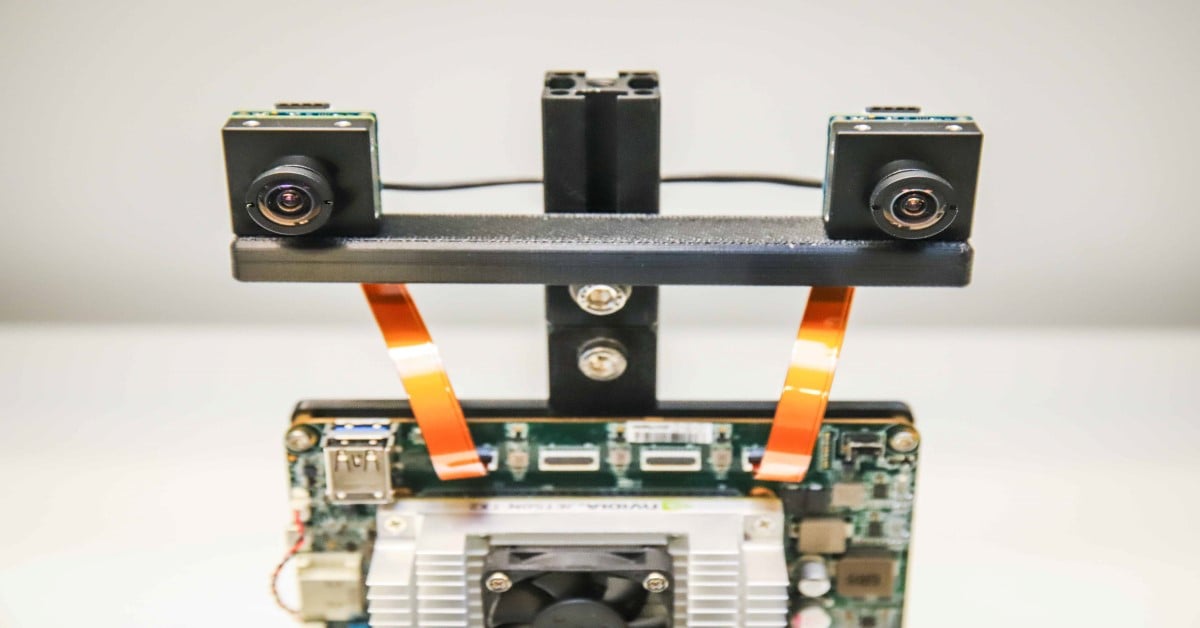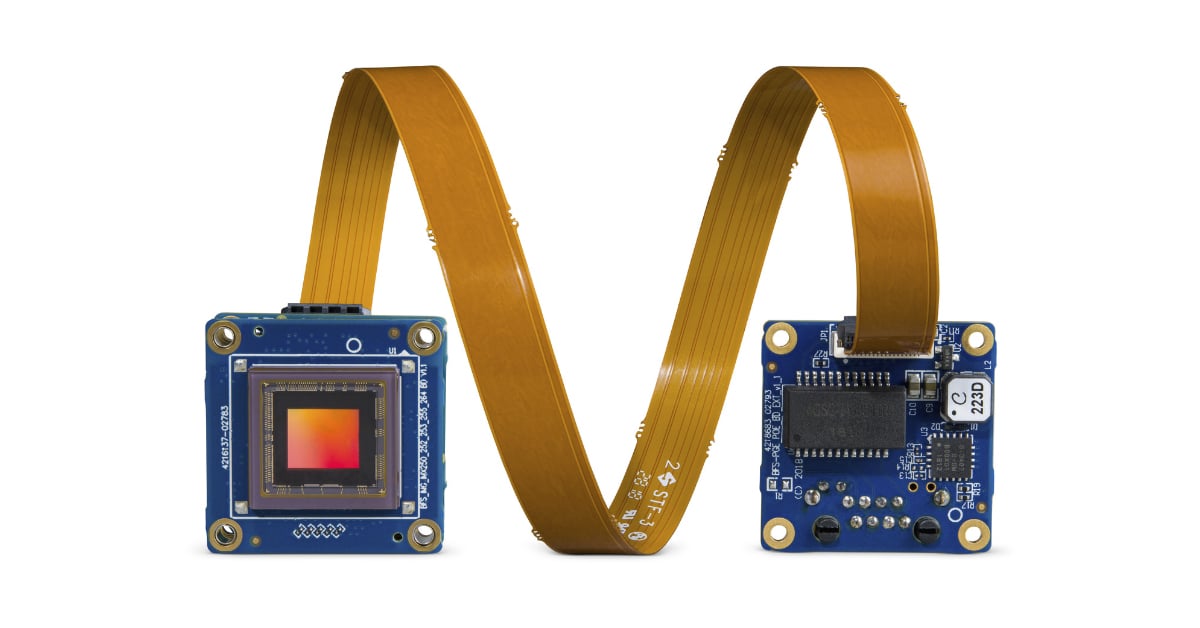Next Generation Interfaces Compared
Beyond the Specifications, Comparing the Next Generation Interfaces
This article provides an overview and comparison of the next generation of the Ethernet, USB, Camera Link, and CoaXpress standards, and introduces Thunderbolt3 as an interface to watch. These camera interfaces have helped to shape the growth of the machine vision industry and will continue to do so into the future.
10 Gigabit Ethernet
Ethernet existed ten years prior to its adoption as the IEEE 802.3 standard in 1983. Since then, its reliability, flexibility, and continually increasing speed have made this technology truly ubiquitous. As of 2016, one out of two machine vision cameras sold were Gigabit Ethernet (GigE).
The enhanced speed and lower latency of 10 Gigabit Ethernet (10GigE) build on the strengths of GigE. With 10Gbit/sec of bandwidth, a 10GigE FLIR Oryx can transmit uncompressed 12-bit 4K60 video over 60 meters on inexpensive, readily available cables. The 10GBASE-T implementation of 10 Gigabit Ethernet supported by the FLIR Oryx uses the familiar RJ45 connector and twisted pair copper cables.
The IT industry has adopted 10GigE for use in network infrastructure. With the support of companies like Apple and Asus, it is quickly gaining traction as a consumer interface. The widespread adoption of 10 GigE has fostered a strong ecosystem made up of a wide range of both low-cost and high-performance products.
A revised version of the Power Over Ethernet (PoE) standard has been introduced. IEEE 802.3bt enables PoE over 10 Gigabit links, though it has not been widely adopted. There are currently no PoE 10GigE machine vision cameras available.
10GBASE-T supports the IEEE 1588 Precision Time Protocol (PTP), which enables cameras like the FLIR Oryx to automatically synchronize their internal clocks to each other and to other Ethernet-enabled hardware, with no user oversight.
USB 3.2
The recently finalized USB 3.2 specification is the next major revision of the popular interface. USB 3.2 uses both sides of a Type-C connector to support two USB 3.1 links in parallel, enabling transfer speeds up to 20 Gbit/sec. The distinctions between Generation 1 and Generation 2 introduced with the transition from USB 3.0 to USB 3.1 will be maintained in USB 3.2.
Key differences between Generation 1 and Generation 2 links include the signalling rate, encoding efficiency, and maximum cable length. Generation 2 doubles the signalling rate from 5 Gbit/sec to 10 Gbit/sec, while replacing the 8/10b encoding used in Generation 1 with more efficient 128/132b encoding. This reduction in encoding overhead means Generation 2 links support real-world transfer speeds much closer to the signalling rate. Generation 1 links provide 4 Gbit/sec of real-world throughput, while Generation 2 links support up to 9.7 Gbit/sec.
The maximum cable length of Generation 1 links is five meters, while Generation 2 links are limited to one meter. The short cable length of USB 3.2 Generation 2 is likely to limit its widespread adoption until affordable active optical cables become available.
Combining USB lane numbers and generations introduces the potential for consumer confusion. A USB 3.2 interface will not necessarily be faster than USB 3.1. Even if the less efficient encoding of USB 3.1 Generation 1 were doubled, it would still be about 20% slower than a USB 3.1 Generation 2 connection. Differences in the maximum cable length for each generation mean that users select a cable with an appropriate length for their interface’s generation.
USB supports Direct Memory Access (DMA), which enables image data to stream from a camera directly into system memory. This is ideal for embedded applications with limited memory bandwidth and CPU power.

Fig. 1. Timeline of USB standards and their relative throughput
Thunderbolt3
The Thunderbolt interface has yet to see significant uptake in the machine vision industry, but Thunderbolt3 may change this. It promises a useful combination of up to 40Gbit/sec, ease of use, and familiar USB Type-C connectors. Thunderbolt3 will also support the USB Power Delivery specification, enabling it to deliver up to 100W of power. The current cable length limit of 50 cm may constrain adoption of this interface until reliable and affordable active optical cables become available.
While the maximum signaling speed across a Thunderbolt3 cable is 40Gbit/sec, the real-world throughput will appear significantly lower. The PCIe 3.0 x4 connection between hosts and devices, and their PHYs, provides up to 32Gbit/sec of bandwidth. The remaining bandwidth is used to transmit DisplayPort signals for HD and UHD monitors. The PHY’s PCIe interface enables DMA on the host side.
Intel, which develops and maintains the Thunderbolt technology, recently announced that all their new chipsets will support Thunderbolt3. They also relaxed licencing requirements to encourage third-party manufacturers to adopt the interface. Intel’s efforts to drive adoption of Thunderbolt3 have created an unusual consumer ecosystem where Thunderbolt3 hosts are widely available but devices are not. There are currently no Thunderbolt3 machine vision cameras.
CameraLink HS
The CameraLink HS standard was established in 2012. It improves on the original CameraLink interface with increased speed and greater cabling flexibility. The CameraLink HS standard adds support for several types of cabling, allowing users to trade speed for cable length. The expensive and awkward cables associated with the previous generation are gone. CRC error correction and data resend improve transmission reliability. Single-bit transmission errors are automatically detected and corrected. For additional bandwidth on high-speed applications, up to eight cables can run in parallel.
|
Connector |
1x Bandwidth |
8x (Max) Bandwidth |
Max Length |
Technology |
|
SFP |
2.4 Gbit/Sec |
19.2 Gbit/Sec |
300+ m |
optical |
|
SFP+ |
9.6 Gbit/Sec |
76 Gbit/Sec |
300+ m |
optical |
|
CX4 |
16.8 Gbit/Sec |
134 Gbit/Sec |
15 m |
copper |
Fig. 2. Summary of cabling options available for CameraLink HS
Despite its enhancements, CameraLink HS is not a consumer interface. It does not support DMA. Instead, its design involves transferring image data into an FPGA as quickly as possible. Before incoming CameraLink HS image data passes to a user, a frame grabber receives and assembles it, a requirement that adds cost and complexity to vision systems. Complexity compounds in systems using a data splitting topology with multiple PCs.
CoaXPress 2.0
The CoaXpress 2.0 specification, finalized in early 2017, provides performance and functionality improvements to support its focus on high-speed applications. CoaXpress borrows from technology that enables 4K60 video over HD-SDI to increase single-channel speed from 6.25 Gbit/Sec to 12.5Gbit/sec. At this speed, a 4-core cable can transmit four Gigabytes of image data from camera to host every second. The doubling of the maximum uplink speed facilitates triggering at rates over 500kHz. CoaXpress 2.0 supports multi-destination transmission, enabling cameras to send data to frame grabbers across multiple host PCs.
CoaXpress 2.0 maintains the 40m maximum cable length of standard CoaXpress. While single-lane coaxial cables are inexpensive, the cost of multi-lane cable assemblies and frame grabbers quickly adds up.
Automated Optical Inspection
The enormous diversity of Automated Optical Inspection (AOI) applications means there is no single ideal interface.
Continuous-feed processes like printing or thin film manufacturing require cameras with very high frame rates. The high bandwidth offered by multi-lane implementations of CoaXpress and CameraLink HS are ideal for these applications and serve them better than line-scan cameras. The multi-host capability of CoaXpress enables parallel processing using multiple PCs.
Many inspection systems are limited by factors other than camera and interface speed. Applications like semiconductor inspection in fan-out wafer-level packaging are limited by mechanical processes. For these applications, the high frame rates possible with CameraLink HS and CoaXpress will not yield meaningful improvement in system performance but will add significant cost and complexity. The speed, ease of use, and low life-cycle cost of USB 3.2 and 10 Gigabit Ethernet make them ideal interfaces for inspection applications.
Some AOI systems are part of larger pieces of machinery. Motors and other equipment may generate unwanted electromagnetic interference (EMI). USB 3.2 and Thunderbolt3 are not meant for use in environments with high amounts of EMI. Ensuring the reliability of these interfaces in EMI-prone environments requires the development of reliable and affordable active optical extenders.
Industry 4.0 may be a buzzword, but its underlying principle of systems operating on a consistent time-based, rather than event-based, control represents a major shift in system design. 10GigE is the only next generation interface to support the IEEE 1588 Precision Time Protocol (PTP), which enables the synching of cameras with other Ethernet-enabled devices. System designers are adopting PTP as a key specification for future implementation of Industry 4.0 principles.
3D Scanning
Handheld
Handheld 3D scanning systems are compact, battery-powered devices. Low size, mass, and power consumption are critical to developing a successful product. USB 3.2 and Thunderbolt3 would work well for this application, where the device would be smaller than any cable length limit. These interfaces would provide sufficient bandwidth to support the resolutions required for high point cloud density, and a frame rate high enough for good scanning speed.
USB 3.2 and Thunderbolt3 would deliver additional space savings as they do not require a separate frame grabber. USB Power Delivery could be useful for powering additional onboard devices such as IR illuminators or structured light projectors. A wide range of compact embedded systems and single-board computers support USB. The expectation is that this trend will continue with the transition to USB 3.2.
Large Format
Large format systems for scanning cars, aircraft, or entire buildings are generally portable, and ease of deployment and robustness critical. 10 Gigabit Ethernet is a reliable solution that provides the bandwidth to capture high-resolution point clouds. The long maximum cable length supports long base lines, enabling high-accuracy scanning. While Camera Link HS and Coaxpress can support the typical cable lengths used by large-format 3D scanning applications, their dependence on frame grabbers adds cost and complexity. Since these systems are typically fixed, additional speed would not deliver any improvement in performance.
Virtual Reality
Virtual Reality (VR) is a demanding application that requires two or more tightly synchronized cameras. VR systems capable of capturing stereo imagery in six degrees of freedom can require 20 or more cameras. For systems comprised of individual camera modules, the cameras should be close as possible to each other to minimize parallax error. The compact Type-C connector that USB 3.2 and Thunderbolt3 use is ideal in this respect. VR systems are typically consumer focused. The user-friendly nature of USB, Thunderbolt, and Ethernet interfaces makes them preferable to CoaXpress and CameraLink in this space.
VR systems used for content such as sports don’t capture an entire sphere since only the action on the field is of interest. These systems typically consist of fewer, higher-resolution cameras. The large size of typical sporting venues usually requires longer cables. 10GigE’s support of uncompressed 4K60 video, long cables, and its simplicity makes it ideal for this application. Optical media converters supporting 10 Gbit/sec transfer speeds over distances greater than a kilometer are available.
For highly specialized slow-motion volumetric capture systems, the speed, cable length capacity, and support for PTP-based clock synchronization make 10 Gigabit Ethernet a good choice, with CoaXpress 2.0 a viable option at extremely high speeds for scientific applications.


